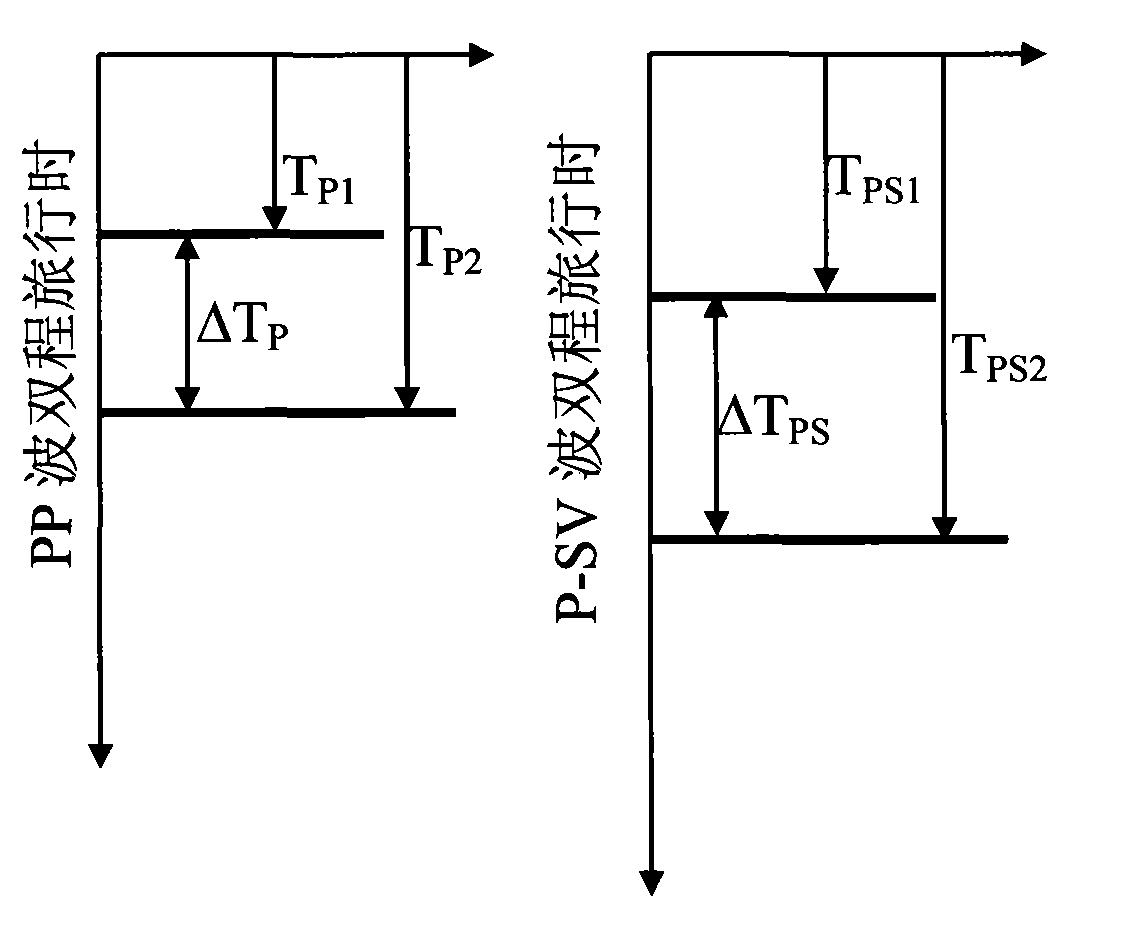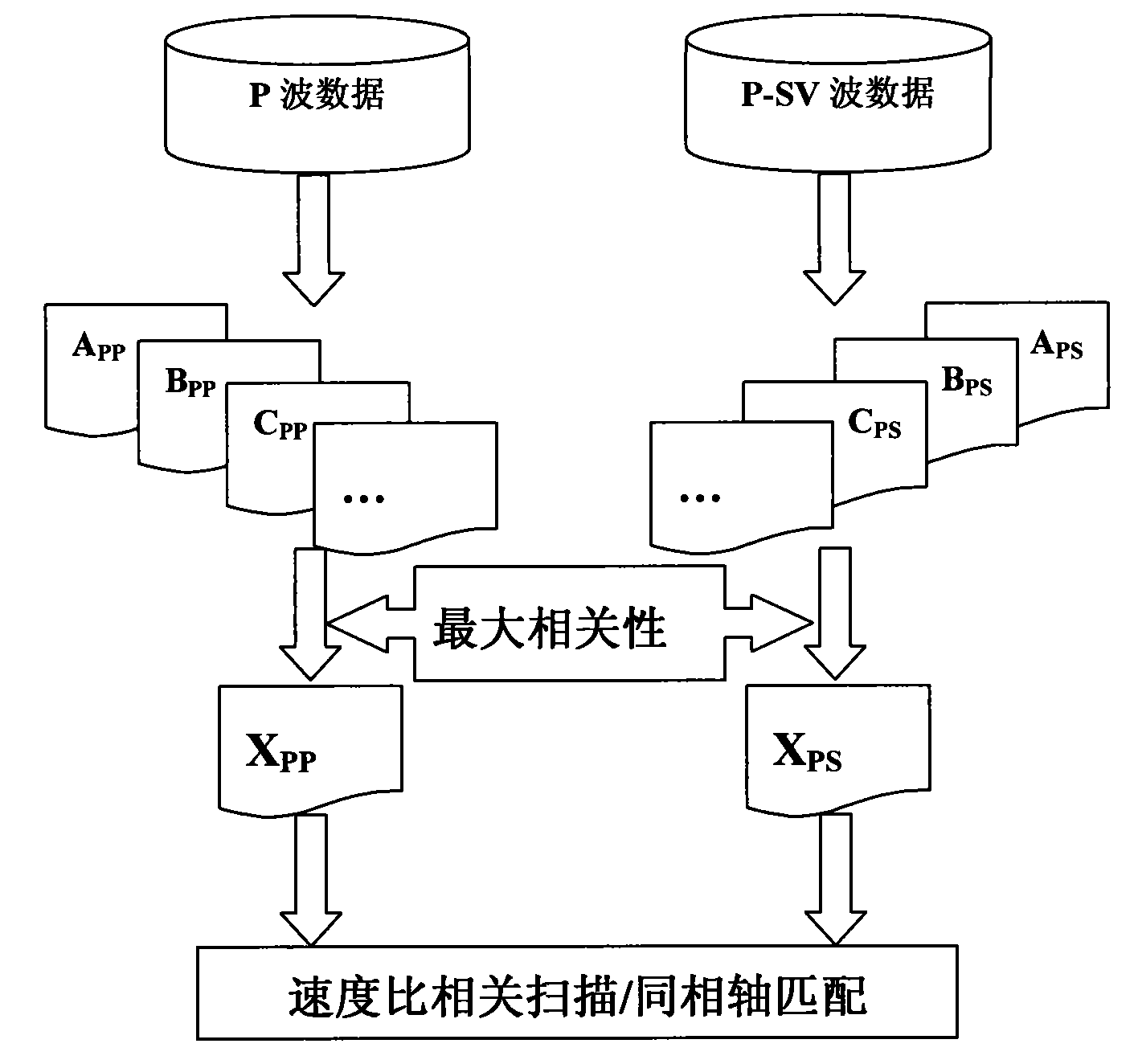Method for comparing and demarcating multi-component seismic data positions
A seismic data and multi-component technology, applied in the field of multi-component seismic data horizon correlation and calibration, can solve the problems of poor continuity and inability to meet the needs of complex oil and gas exploration, and achieve the effect of high-precision velocity ratio
- Summary
- Abstract
- Description
- Claims
- Application Information
AI Technical Summary
Problems solved by technology
Method used
Image
Examples
Embodiment Construction
[0040] The multi-component seismic data horizon comparison and calibration method of the present invention is a data-driven method, which does not require well logging / VSP data. The principle is to extract the attribute with the greatest correlation from the PP wave and P-SV while considering the difference in the amplitude characteristics of the longitudinal wave and the converted wave, and then use the correlation characteristics of these two attributes to realize the horizon correlation and velocity of multi-component seismic data. Ratio extraction, and then realize the fine horizon comparison and calibration of multi-component data ( image 3 shown).
[0041] The method provided by the invention, its specific embodiment is by Figure 4 Shown:
[0042] (1) Excite seismic waves and use three-component geophones to record seismic waves, and perform high-fidelity processing on the vertical component longitudinal wave ① according to the conventional seismic data processing fl...
PUM
 Login to View More
Login to View More Abstract
Description
Claims
Application Information
 Login to View More
Login to View More - R&D
- Intellectual Property
- Life Sciences
- Materials
- Tech Scout
- Unparalleled Data Quality
- Higher Quality Content
- 60% Fewer Hallucinations
Browse by: Latest US Patents, China's latest patents, Technical Efficacy Thesaurus, Application Domain, Technology Topic, Popular Technical Reports.
© 2025 PatSnap. All rights reserved.Legal|Privacy policy|Modern Slavery Act Transparency Statement|Sitemap|About US| Contact US: help@patsnap.com



